Home Safety Checklist For St. Paul
Keeping safe and secure in your residence should be your number one responsibility. But are you overlooking some key safety items? Use this home safety checklist for St. Paul and find out where your home can use greater attention.
This guide begins with a few whole-home safety techniques, and then we delve down room-by-room. Then, you can call (651) 300-3764 or send in the form below to get your house set up.
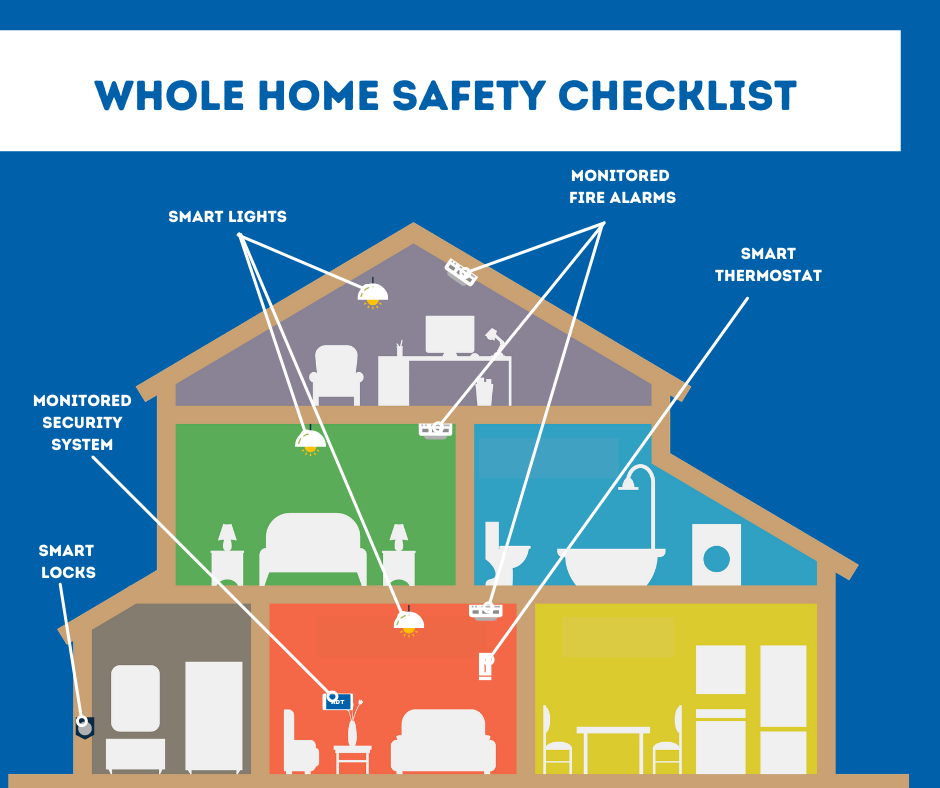
Whole Home Safety Checklist for St. Paul
While you should employ a individual room method for home safety in St. Paul, there are a few things that work for all of your rooms. These components can link to each other through a wireless hub, and often can work off other components. You can also control all your home safety components using a mobile security app, such as ADT Control:
-
Monitored Security System: Each one of your doors and windows should use a sensor that warns your family to intrusion. As the alarm triggers, your monitoring agent picks up the alert and calls emergency personnel.
-
Smart Lights For Each Room: Of course, you can schedule your smart bulbs so your house is more energy-efficient. But smart lights can also allow you to keep safe throughout an emergency. Have your downstairs lights flash on when an alarm triggers to scare off robbers or brighten your way to a secure place.
-
Smart Thermostat: Like your smart lights, a smart thermostat in St. Paul should save you 10%-15% in energy costs. It also can start an exhaust fan when your alarms senses a fire.
-
Monitored Fire Detectors: It’s code that you have a smoke detector on every level of your house. You can increase your fire game by hanging a monitored fire alarm that looks for excessive smoke and heat, and notifies your 24-hour monitoring experts when it detects a fire.
-
Smart Door Locks: Every door that uses a deadbolt can be made safer with a smart door lock. Now you may assign key codes to each family member and get alerts to your phone when the locks are unlocked. Your locks can even automatically turn off, letting you quickly get out when you have a fire or dangerous situation.
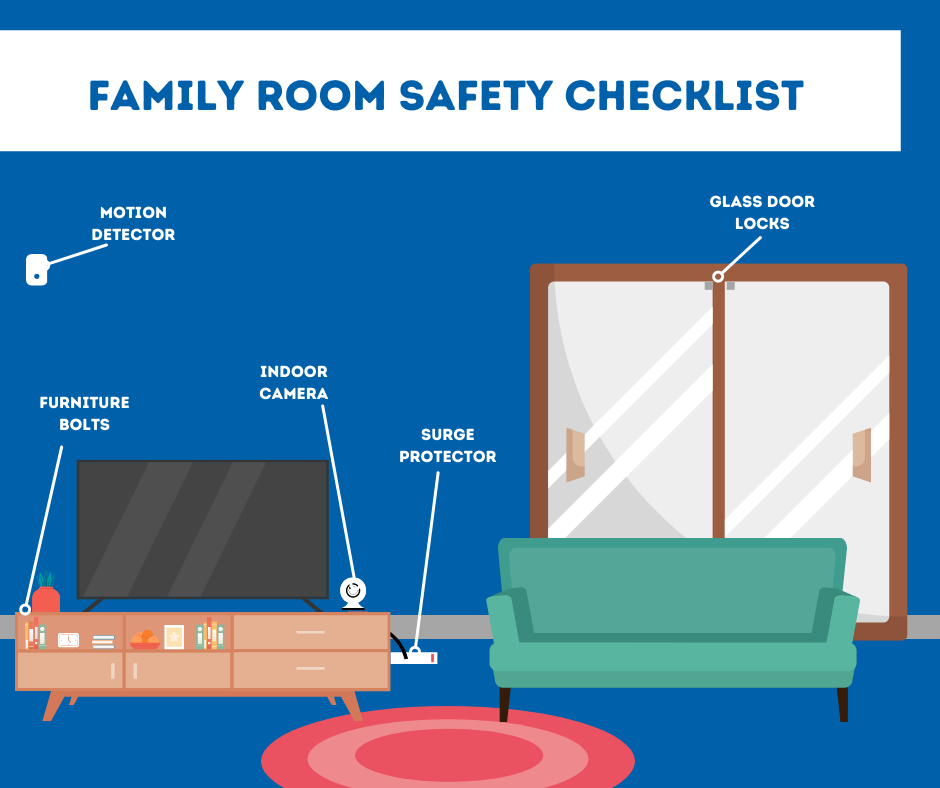
Family Room/Living Room Safety Checklist For St. Paul
You’ll spend most of your time in your family room, so it can be the most reasonable area to start making your home a safer place. Electronics, like a TV or video games, usually are located in your family room, making it a tempting space for burglars. Begin with placing a motion sensor or indoor security camera in your room, then take a look at all these safety protocols:
-
Motion Sensors: By installing motion detectors, you’ll have a shrieking alarm if they detect unusual movement within your family room. You’ll want motion detectors that filter out pets or you’ll see a tripped alarm every time your cat roams by for a bite of food.
-
Security Camera: An indoor security camera offers an eye on your living room. Watch live streams of everything so you can see what’s happening without leaving your bed. Or talk with your kids in the room by using the two-way talk feature.
-
Surge Protector/Outlet Maintenance: Protect expensive electronics and stop overburdening your electric system with a surge protector. For additional comfort, install a smart plug with surge protection in the unit.
-
Heavy Furniture Secured To The Wall: If you have any small children, you’ll need to bolt your bookshelves and entertainment center to your wall. This is especially crucial if your family room has carpet that can make objects extra unstable.
-
Enhanced Locks For Sliding Glass Doors: If your family room uses a sliding door that leads to a backyard, deck, or outside porch, you probably get that the lock is usually thin. Use a special lock, like a cross bar or small locks that are located on the top and bottom of the opening.
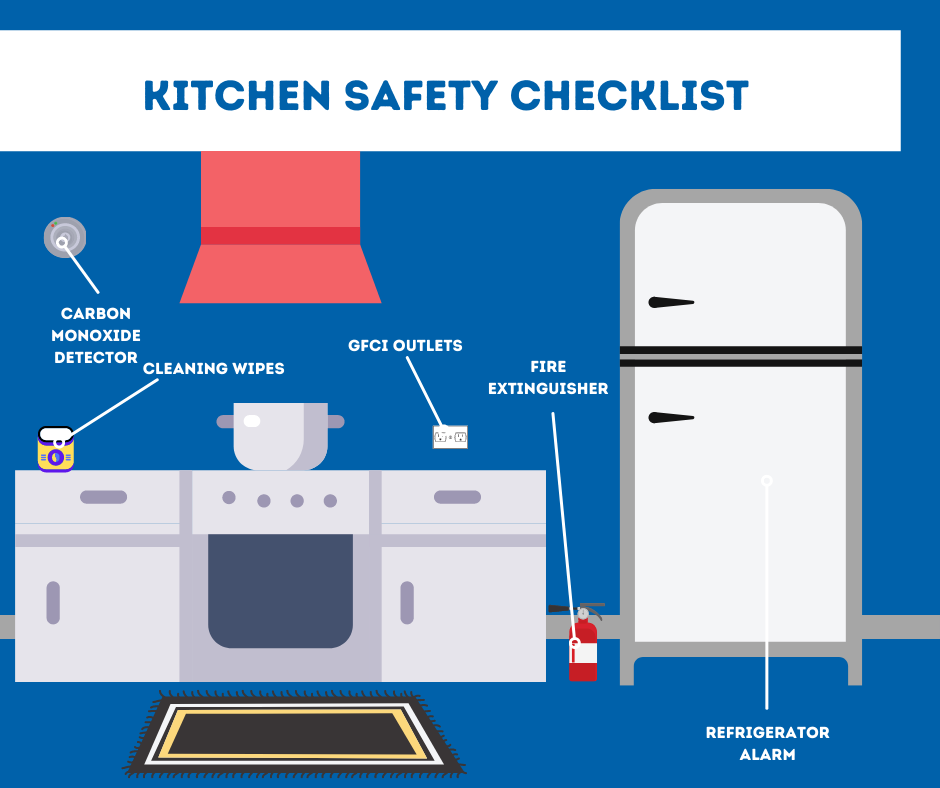
Kitchen Safety Checklist For St. Paul
Your kitchen has many items that can bring safety and security to your home. Most of these things should be easy to add and should be found in the Target or Walmart:
-
Fire Extinguisher: A fire can come from from an unwatched pot or a towel that’s too close to a burner. Always keep a fire extinguisher at hand for any stove or oven mishaps.
-
Circuit Interrupter Box On Every Outlet: A circuit interrupter outlet should be installed anywhere they’re by water to prevent a deadly shock. That means the plugs close to your sink and kitchen counter. Since 1987, it’s been standard to have one circuit interrupter outlet per circuit. But if you don’t want all your outlets to go dead when one outlet trips, you’re going to want to have a single GFCI on each outlet.
-
Monitored Carbon Monoxide Detector: A CO detector is needed in spaces that have natural gas for the oven and range. If your gas burners malfunction, the CO detector will cause a high-decibel noise and contact your monitoring center.
-
Disinfectant Wipes Or Spray: The biggest safety problem in the kitchen is the viruses, bacteria, and cross-contamination that comes with uncooked meat and dairy. Always store cleaning wipes or a bleach spray to scrub off your counters after cooking.
-
Freezer and Refrigerator Alarm: The food items in the refrigerator should remain at a cold temperature to be ready to eat. If you accidently leave the refrigerator door open too long, then a constant beep will let you know so you can shut it securely. Some fridges already have an alarm, some won’t, and you’ll have to get an external alarm from online.
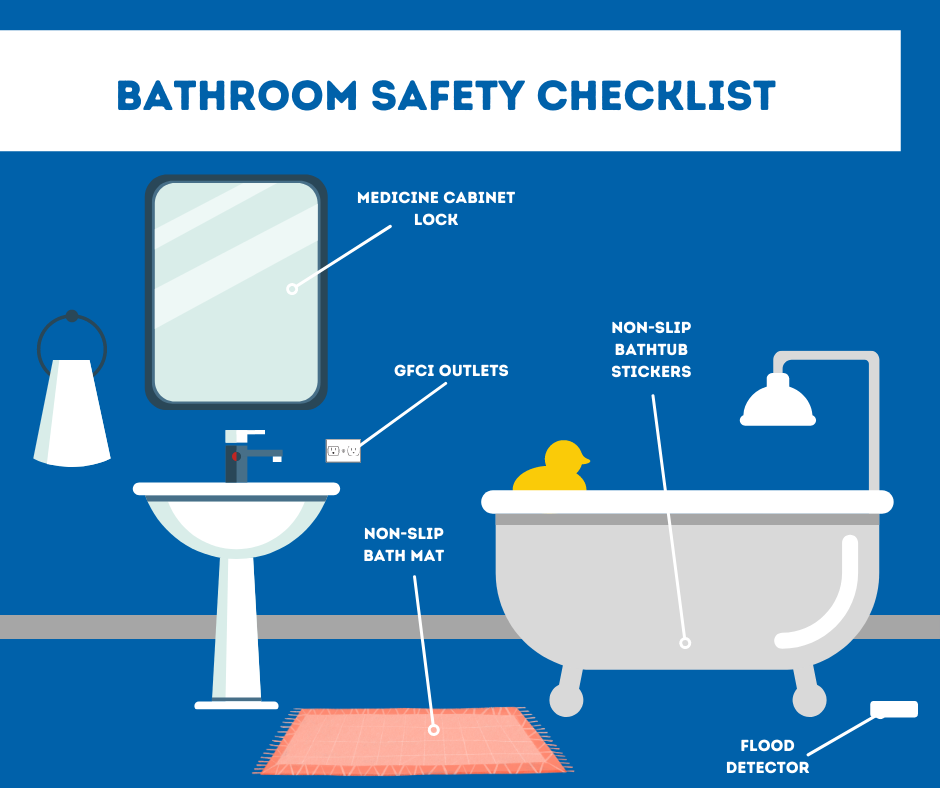
Bathroom Safety Checklist For St. Paul
Just because there’s not a bunch of space in your bathroom, you will still have safety concerns. From flood detectors to anti-surge outlets, here are some safety improvements for your bathroom:
-
Flood Sensors: A leaking sink or tub can cause an expensive amount of damage. Get alerted early about water problems with a flood detector and save hundreds to thousands of dollars from damage.
-
Non-slip Bath Mats: A slip and fall in the bathroom can be devastating, causing bumps, sore joints, or broken bones. You can avoid these issues with a textured bath mat for your wet feet.
-
No-slip Bathtub Stickies: Like a tiled floor, a tub basin can be a slick place to move in. Make sure every bathtub has some non-slip stickers so your toes have a bumpy patch to gain traction.
-
Medicine Door Latch: If you have young toddlers or anyone with memory difficulties, you need to take extra care regarding prescription medicine. Safeguard your bottles by getting a medicine cabinet with a locking latch.
-
GFCI Circuits: While installing better outlets in the kitchen, you will have to also use a safer circuit interrupter outlet on every bathroom circuit. This will cut the current if water enters the outlet or there’s an unusual jolt from a curling iron or hair dryer.
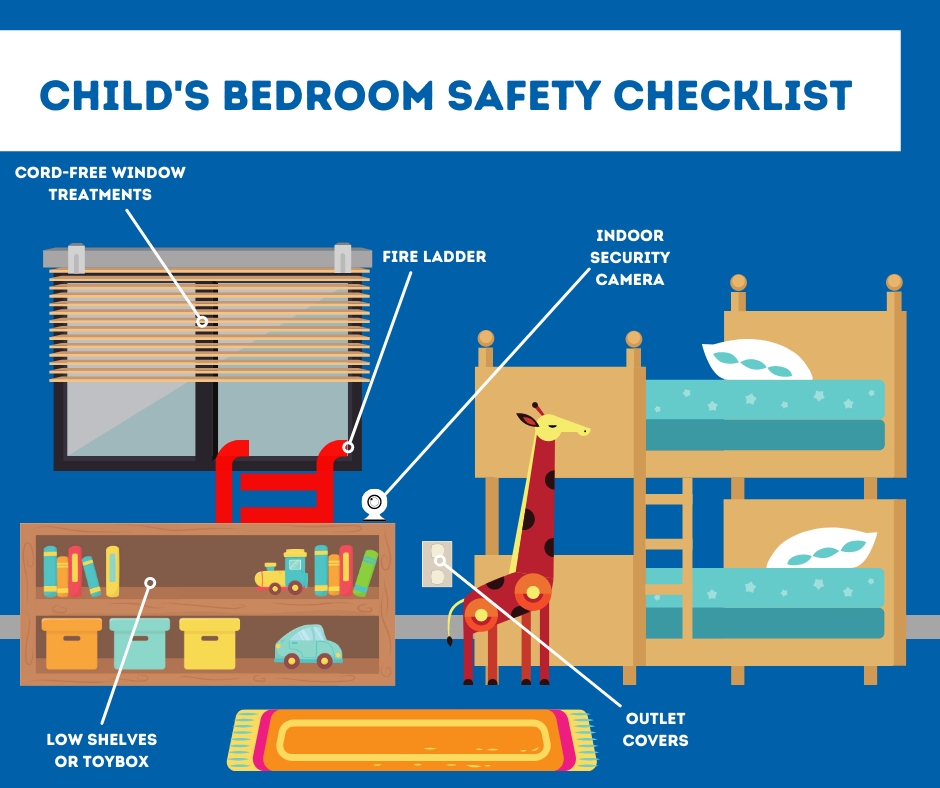
Children’s Bedroom Safety Checklist For St. Paul
Your kid’s bedroom should counterbalance safety with manageability. If their window treatments or other items are safe but difficult to manage, then your child may try risky activities -- like scale a dresser -- to open them. Here are some easy, yet safe, ideas:
-
Cord-Free Window Coverings: Safety agencies have identified corded window treatments a hidden danger for kids and pets. Put in motorized shades that kids can easily open and close with a remote. Or go state-of-the-art and pair your motorized coverings to your ADT smart hub so they can raise without anyone’s help when the sun comes up, and close at night for added darkness.
-
Tableside Security Camera: A security camera perched on your kid’s dresser can act just like a high tech baby monitor that you can watch with a smartphone. And when they want something, they can push the 2-way talk button on the camera.
-
Outlet Covers: While every outlet should use protective covers on them when you have small children, this is especially needed in their bedroom. It’s the main place in your home where your child will most likely play solo without consistent adult supervision.
-
Window Safety Ladder: If you use bedrooms on an upper story, then you should have a window escape ladder. These should let a young one leave the house when the stairway or ground floor are on fire. Just remember to go over how to unfurl them a few times a year.
-
Toy Chest Or Low Bookshelves: It’s strange to think about a toy box as a safety item, but you’ll understand if you’ve ever tramped on a building block in your stocking feet. A clutter-free floor gives your child a quick way out during a safety or security event.
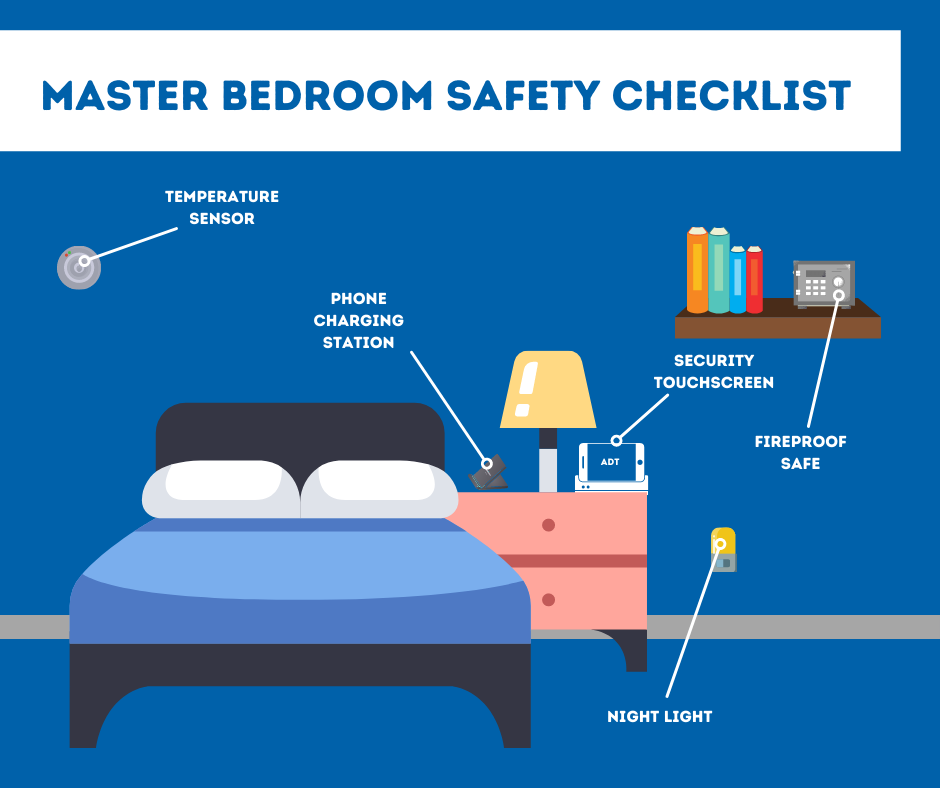
Main Bedroom Safety Checklist For St. Paul
Your main bedroom should be a refuge, so let your safety items make life easier when you have an emergency event. After all, being jerked awake by a wailing siren can be confusing.
-
Security System Touchscreen: Having a smart hub on your dresser helps you know what’s happening without jumping out of bed. You could alternatively log into your ADT phone app but, the HD touchscreen can be easier to use to use when you’re coming out of sleep and finding your bearings.
-
Phone Charging Stand: We use our phones for so much now GPS, internet searches, time wasters, and --legend has it-- even phones. However, a depleted device in the middle of the night cuts us off from communications if during an emergency. So, a charging station or cord becomes an important part of your nightstand.
-
Smart Lights Or Nightlights: A tiny light can be a beacon when you’re jolted awake from an alarm or other loud sounds. If you can’t fall asleep with a small nightlight, use smart bulbs in your fixtures. Then you can get light simply with a button push or voice command.
-
Fireproof Safe: Stash your important documents like insurance cards, medical information, or a bankbook in a fireproof safe. Your safe can be a bigger one that is located in a corner or a slender handheld safe that you can snatch when you leave during a fire or break-in.
-
Temperature Sensor: The drawback with most bedrooms is that they might feel too warm or be frigid because they are located across the house from the thermostat. A heat sensor will communicate to your smart thermostat so you will have a nice, restful sleep at a wonderful climate.
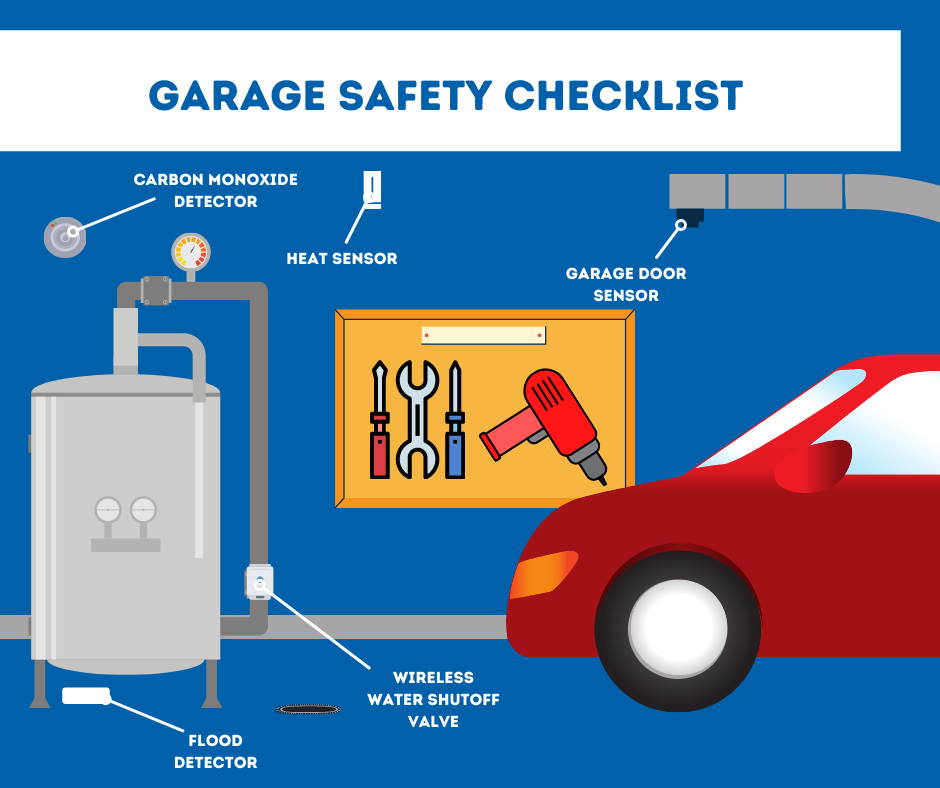
Basement/Garage Safety Checklist For St. Paul
Most safety needs in the garage or basement are with your water heater or furnace. Seeing hazards before they start can stave away bigger emergencies in the future. So, as you look around your garage or basement, pay attention to these safety items:
-
Water Detector Or Sump Pump Alarm: Installing a flood sensor in back of your water heater or sump pump can stop you from wading into a mess when you step into your basement or garage. Do you really want to lose your night getting rid of standing water?
-
Carbon Monoxide Detector: It’s beneficial to have a CO detector in areas where a gas leak can happen. If you use gas heat, try to put a detector in the same room as your unit.
-
Wireless Water Shutoff Valve: If your water alarm senses a plumbing leak or a broken pipe, then you need to cut off the main water pipe immediately. With a wireless shutoff valve, you can stop water flow from any mobile device. That’s perfect when you’re visiting relatives and see an emergency leak text on your phone.
-
Garage Door Sensor: Leaving the garage up brings about all types of problems. You can waste HVAC energy through that large opening, and all sorts of animals or intruders can just saunder in. A remote sensor will text you about a forgotten garage door and lets you close it remotely.
-
Temperature Sensor: A heat alarm in your garage or basement is a definite if you worry about your pipes freezing. The heat in these areas can be drastically different than the main part of the house, so you may need to have a closer eye on the temperature with your mobile app.
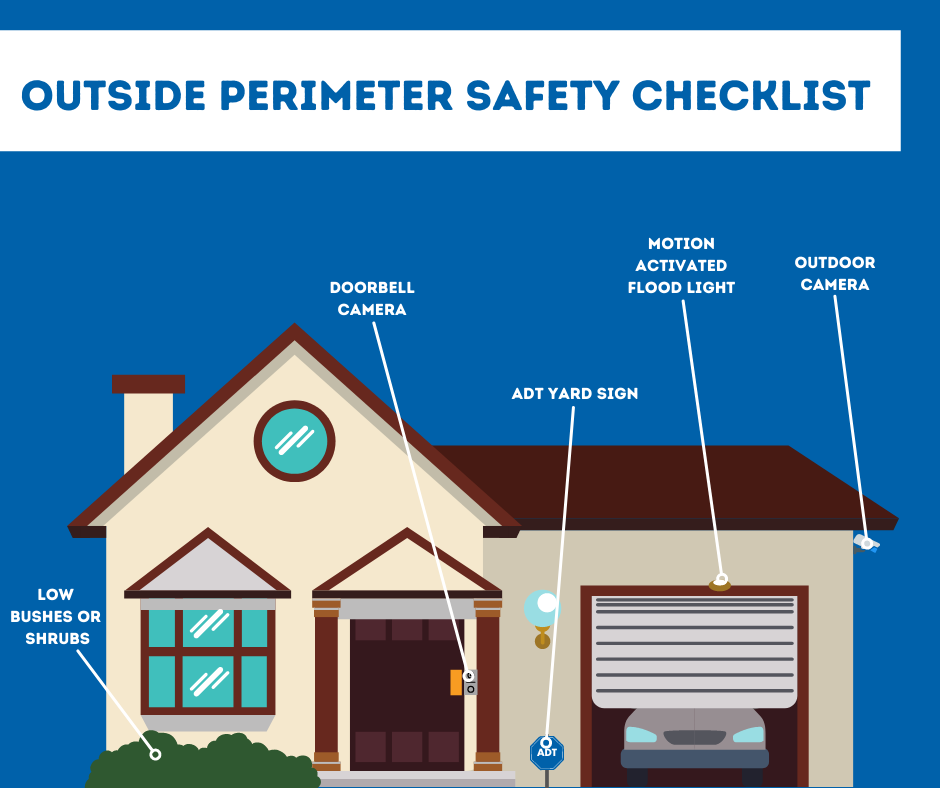
Outside Perimeter Safety Checklist for St. Paul
Your front yard, driveway, and front walk are just as important to make safe as the interior of your house. Use this checklist to create a safe outside:
-
Doorbell Security Camera: See who’s arrived at the door before you open it and talk to guests. See deliveries and record video clips if they are taken.
-
Outdoor Security Camera: You can hang outdoor cameras to alert you to suspicious lurkers in your yard. These security cameras are especially useful in places where you might not have a window installed -- like a side yard or by the driveway.
-
Window Height Bushes: Tall shrubs can give you some solitude, but they also block your view of the yard. Don’t give potential thieves a place to hide. Plus, large bushes or foliage around your home can jam up gutters and bring in ants and termites.
-
ADT Signs And Decals: One of the biggest disincentives for home intrusion is alerting would-be rogues that you own an updated ADT security system. An ADT yard stick by the main walk and a window sticker will alert lurkers that they should keep walking to an less prepared score.
-
Motion Activated Flood Lighting: Light is the best deterrent to those who lurk in the unlit places. Motion-triggered flood lights on your deck, porch, or garage can frighten possible intruders away. They also help you work the locks when you get home late at night.
Call Secure24 Alarm Systems To Help You Finish Your Home Safety Checklist for St. Paul
While Secure24 Alarm Systems can’t install each household item on your St. Paul home safety checklist, we can offer a powerful home security. With easy-to-use devices and ADT monitoring, we can customize the perfect system for your house’s needs. Simply contact (651) 300-3764 and talk to a professional or fill out the form below. Or customize your own system with our Security System Designer.
